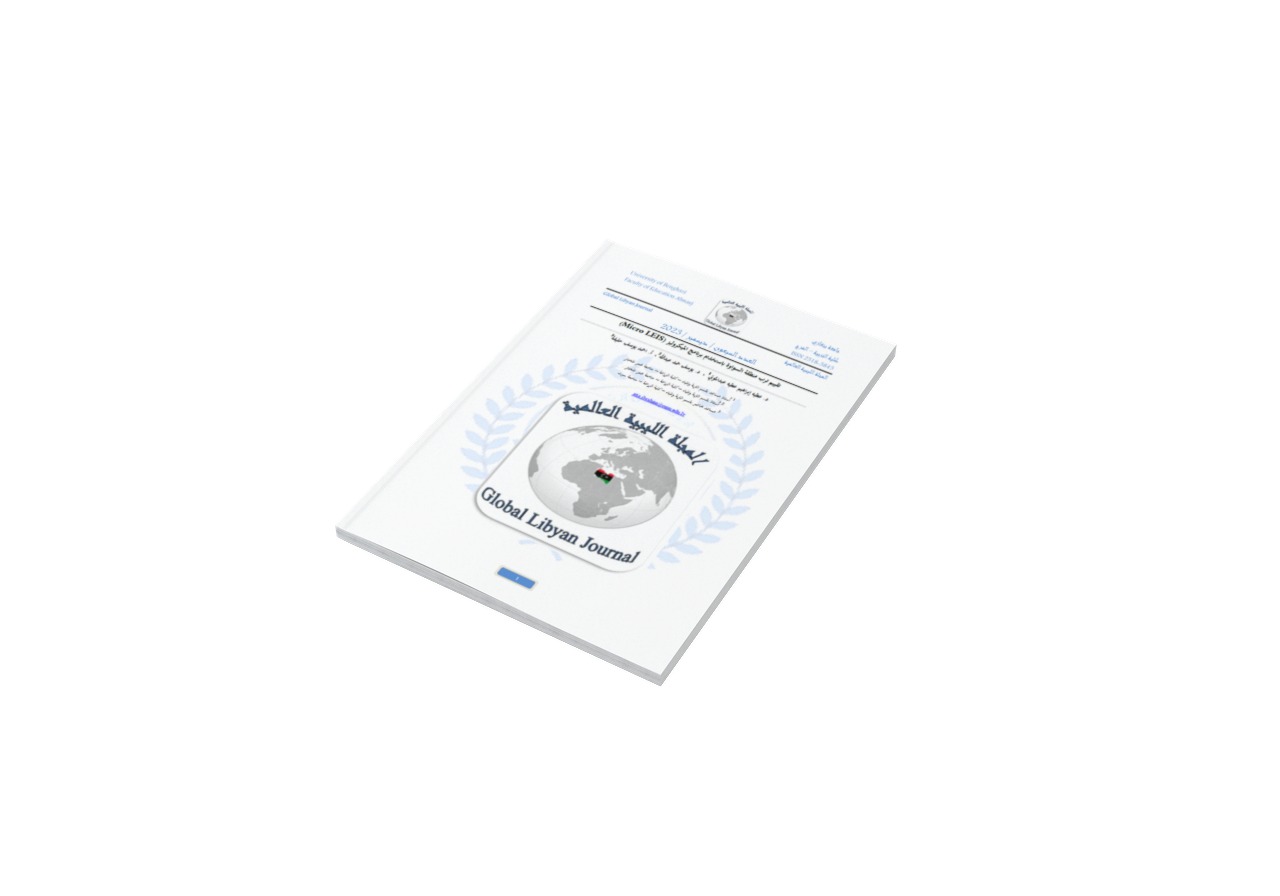Evaluation of the soil of the Al- Swawa region using Micro LEIS program
DOI:
https://doi.org/10.37376/glj.vi70.4589Keywords:
land evaluation, land capability, land suitability, Al- Swawa area, Micro LEIS programAbstract
This study was conducted with the aim of evaluating the soils of Al- Swawa area in the city of Sirte, which has an area of (5000) hectares, determining its general productive capacity and determining its suitability for the cultivation of the selected crops. The computer was used to assess the suitability of the land to grow specific crops, through the application of the Micro LEIS program, were applied to the surface horizon samples of soils in the study area (0-30 cm), The results of the evaluation using the Micro program showed that the general productive capacity of the land, fell into two suitable types, namely medium suitable soils (S3) for an area of 4839 hectares, at a rate of (96.666%), and the main determinant factor for cultivation was the erosion factor (r), and soils Highly suitability (S2) for an area of 167 hectares, at a rate of (3.33%), the determinants of planting were soil factor (i), erosion factor (r), bioclimatic factor (b), and the suitability of crops in the program database was classified in terms of preference. For cultivation in the region is the olive crop, which fell in a suitable high soil type (S2) for each study area, and the determining factors for its cultivation were soil texture (t) for an area of 3636.6 hectares, and it constituted (72.73%) of the study area, and the texture was (t), Calcium carbonate (c) is determining factors for an area of 1368.5 hectares, with a percentage of (27.33%) of the study area, Then, the peach and citrus crops were classified in a highly suitable soil class, and the determining factors were soil texture (t), calcium carbonate (c) for an area of 4281.6 hectares, or (85.52%) of the total area, and texture (t) was the main determinant for an area of 724.7 hectares. By (14.48%) of the study area, and the wheat, soybean, willow and sunflower crops were classified in highly suitable soil rank (S2), and the determining factors were texture (t), calcium carbonate (c) for an area of 3115.6 hectares, with a percentage (63.23%) of The study area, and texture (t) was the main determinant of an area of 1890.5 hectares, with a percentage of (37.75%) of the study area, The crops of corn, melons and tomatoes were classified in the appropriate medium soil rank (S3) and the determining factors were soil texture (t), calcium carbonate (c) for an area of 3260.6 hectares, or (65.14%) of the study area, and texture (t) was the main determinant of the area 1744.8 hectares, or (34.85%) of the study area, and the sugar beet crop came in a suitable medium soil rank (S3) and the main determinants of cultivation were soil texture (t), saturation with sodium (a) for an area of 3421.4 hectares, or (68.34%). From the study area, the texture was (t), calcium carbonate (c), saturation with sodium (a) for an area of 1584.1 hectares, with a percentage (31.64%) of the study area, The cotton crop came in a suitable medium soil rank (S3) and the determining factors were soil texture (t), calcium carbonate (c), saturation with sodium (a) for an area of 3943.7 hectares, with a percentage (78.77%) of the study area, and the texture (t) was, Saturation with sodium (a) are the main determinants of cultivation for an area of 1062.1 hectares, at a rate of (21.23%) of the study area.
Downloads

Downloads
Published
How to Cite
Issue
Section
License
Copyright (c) 2024 Global Libyan journal

This work is licensed under a Creative Commons Attribution-NonCommercial-NoDerivatives 4.0 International License.




